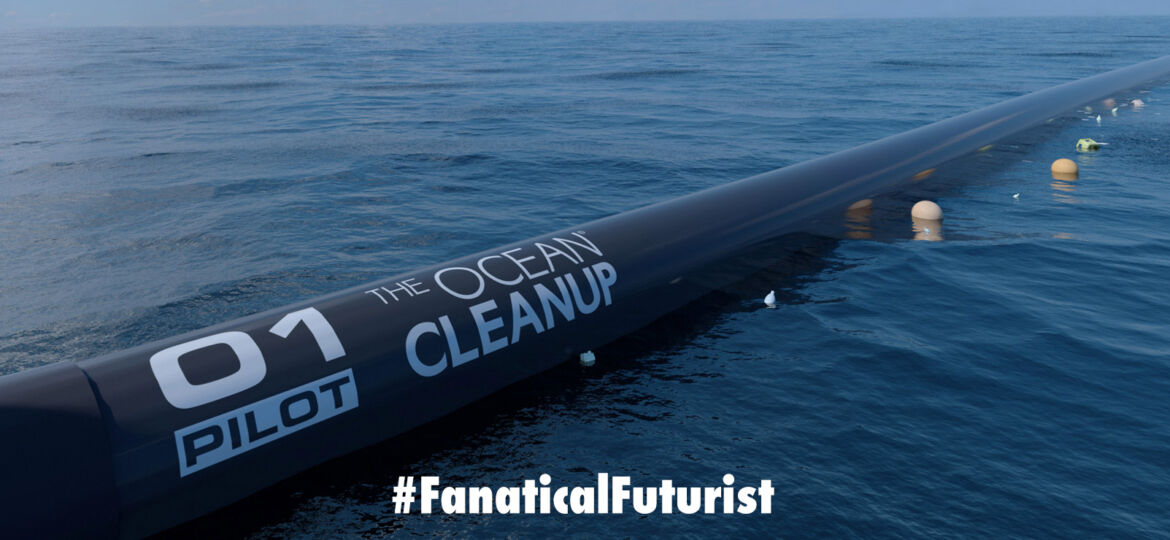
WHY THIS MATTERS IN BRIEF
Plastic waste is a menace at sea and on land, but an ambitious project hopes to clean up 90% of the oceans plastic waste within a decade.
Plastic waste has become a growing issue over the past decade or so which is why more companies than ever before are trying to design new, innovative biodegradable plastics made from everything from sugars to tree glue. But while there’s still some way to go before they hit our shelves one startups ambitious dreams have now become a reality after the company Ocean Cleanup finally got to deploy its $20 million system designed to clean up the 1.8 trillion pieces of trash that are floating around in the Great Pacific Garbage Patch.
The floating boom system was towed out to sea from San Francisco Bay and will now undergo several weeks of testing before it’s finally hauled into position and put into action. The system was designed back in 2013 by Ocean Cleanup’s 18 year old Dutch founder and inventor Boyan Slat, whose stated mission is to “develop advanced technologies to rid the world’s oceans of plastic.”
See how it works
It’s hoped that the floating boom system, which will eventually have the help of dozens more booms, will clean up half of the Great Pacific Garbage Patch within the first five years, with each boom will trap up to 150,000 pounds of plastic per year as they float along the currents between California and Hawaii.
The Great Pacific Garbage Patch is a vortex of trash created by a circulating ocean current, called a gyre, in the central North Pacific that was discovered in the mid 1980s and lies halfway between Hawaii and California.
The garbage patch is so large, it’s easily detectable from space via satellites and covers roughly 1.6 million square kilometers and 1.8 trillion pieces of debris.
The floating boom system, after undergoing testing, will eventually be towed out 1,400 miles to the garbage patch around mid October and start its job of collecting trash. The floating boom works by drifting along with the local currents, creating a U-shaped formation. As the boom floats, it collects trash in the U shaped system, which has 10 feet of netting below it to collect smaller fragments of plastic. Once the boom is full, a vessel will meet the boom to collect the plastic and transport it to land for sorting and recycling.
The idea is that the 10 feet of netting is not deep enough that fish can’t swim below it, with the hope that the boom will collect trash and not fish. However, this is something that remains to be seen in the open ocean.
While the organization has ambitious plans and the technology still remains unproven, so far it’s the closest we’ve come to a developing a solution to clean up the garbage patch, and no other company has a deployable system able to clean it up on this scale.
Ocean Cleanup is also backed by some heavy hitters in the tech industry, including Peter Thiel, co-founder of PayPal and Marc Benioff, the chief executive of Salesforce.com, and over time continued testing and deployment of additional booms will help refine the system to be more efficient and less disruptive to ocean ecosystems. But as for whether it does its job properly or not we’ll have to wait and see.
















